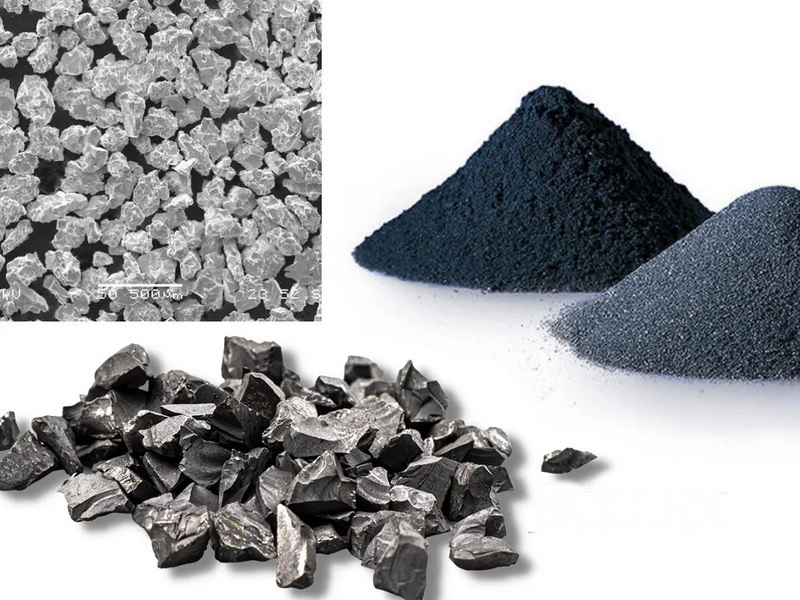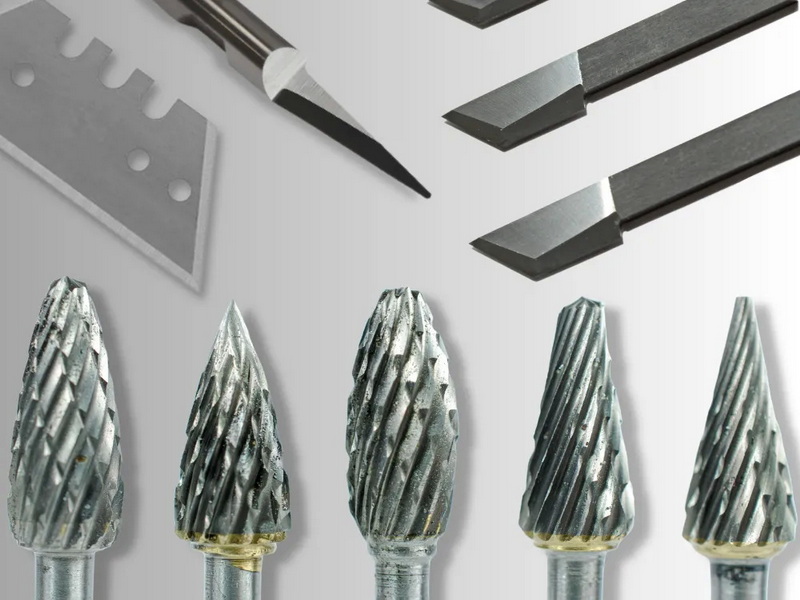Content Menu
● Global Calcium Carbide Production Overview
● Market Impact of Production Trends
>> 1. Price Volatility and Raw Material Dependency
>> 2. Supply Chain Dynamics
>> 3. Technological Advancements
● Regional Production Analysis
>> Asia-Pacific: The Production Powerhouse
>> North America and Europe: Niche Markets
● Applications Driving Demand
● Challenges and Future Outlook
>> 1. Environmental Constraints
>> 2. Market Diversification
● Strategic Recommendations for Stakeholders
● Conclusion
● FAQs
>> 1. Which country leads in calcium carbide world production?
>> 2. How does calcium carbide production affect the environment?
>> 3. What industries consume the most calcium carbide?
>> 4. Which region will see the fastest calcium carbide market growth?
>> 5. Can calcium carbide production become sustainable?
● Citations:
The global calcium carbide industry serves as a critical linchpin for multiple industrial sectors, with its production dynamics directly influencing market stability, pricing structures, and technological innovation. As a compound essential for acetylene generation and steelmaking, calcium carbide's production volumes and geographic distribution shape supply chains across construction, chemicals, and metallurgy. This article examines how global production trends, regional dominance, and evolving applications collectively define market trajectories.

Global Calcium Carbide Production Overview
The world produced approximately 34.5 million metric tons of calcium carbide in 2025, with projections suggesting a rise to 41.47 million metric tons by 2030 at a compound annual growth rate (CAGR) of 3.75%. Production relies on energy-intensive processes, primarily in electric arc furnaces where lime (CaO) and coke react at temperatures exceeding 2,200°C:
CaO+3C→CaC2+CO(Endothermic, 460 kJ/mol)
Key Production Metrics (2025):
- Top Producers: China (95% of Asia-Pacific output), India, Russia, and the U.S.
- Energy Consumption: 8–10 MWh per metric ton of CaC₂.
- Purity Grades: Technical-grade (80–85% CaC₂) vs. high-purity (≥95% CaC₂) for specialized applications.
Market Impact of Production Trends
1. Price Volatility and Raw Material Dependency
Calcium carbide prices fluctuate with coal and electricity costs, which account for 60–70% of production expenses. China's reliance on coal-powered energy (75% of its electricity mix) exposes global markets to geopolitical and environmental policy shifts. For instance, carbon pricing initiatives in Europe have incentivized cleaner production methods, raising manufacturing costs by 15–20% compared to Asia.
Case Study: China's Energy Policy Shifts
In 2023, China's temporary coal shortages caused a 22% spike in calcium carbide prices within six months, disrupting PVC production in Southeast Asia. This underscores the fragility of supply chains tied to fossil fuel-dependent regions.
2. Supply Chain Dynamics
- Regional Dominance: China's 8.94 million metric ton output in 2024 (95% regional share) makes it the global production hub. Export restrictions or logistical bottlenecks in China directly disrupt acetylene and PVC supplies worldwide.
- Vertical Integration: Major players like Denka Company and Xinjiang Zhongtai Chemical Co. control mining, processing, and distribution networks, stabilizing supply but concentrating market power.
3. Technological Advancements
Innovations in energy-efficient furnaces and waste heat recovery systems have reduced per-unit energy consumption by 12–15% since 2020. The partnership between Denka and Transform Materials (2023) to develop low-carbon acetylene chains exemplifies industry efforts to align with sustainability goals.
Regional Production Analysis
Asia-Pacific: The Production Powerhouse
- China: Produced 16.2 million metric tons in 2024, driven by PVC demand (90% of domestic CaC₂ use) and steelmaking. The country's “Dual Carbon” policy aims to curb emissions, pushing manufacturers toward carbon capture and renewable energy integration.
- India: Emerging as a secondary hub, with 8% production growth in 2024 fueled by infrastructure investments.
The Role of Russian Production
Russia, the third-largest producer, leverages low-cost natural gas to maintain a competitive edge. Its 1.3 million metric ton output in 2025 primarily serves European metal fabrication industries. However, geopolitical tensions have rerouted 40% of its exports to Central Asia since 2022.
North America and Europe: Niche Markets
- U.S.: Output remains stagnant at 236,000 metric tons annually, focusing on high-purity CaC₂ for aerospace and specialty chemicals.
- EU: Strict emissions regulations have shifted production to bio-acetylene alternatives, reducing CaC₂ reliance by 4% annually since 2022.
Africa's Untapped Potential
Africa's nascent calcium carbide industry produced just 82,000 metric tons in 2025, but its vast limestone reserves and solar energy potential position it as a future hub for green production. Pilot projects in Morocco and South Africa aim to cut CO₂ emissions by 50% using hybrid solar-electric furnaces.
Applications Driving Demand
| Sector | CaC₂ Use Case | Market Share (2025) |
| Chemicals | Acetylene for PVC, BDO, VAM | 24.25% |
| Steelmaking | Desulfurization, deoxidization | 18.7% |
| Metal Fabrication | Welding, cutting | 12.3% |
| Agriculture | Calcium cyanamide fertilizers | 9.8% |
Chemical Sector Growth:
Global PVC demand (65 million metric tons in 2025) relies heavily on calcium carbide-derived acetylene, particularly in China. The European chemical industry's $28.46 billion R&D investment in 2021 accelerated bio-based alternatives, yet CaC₂ remains irreplaceable for cost-sensitive markets.
Emerging Applications
- 3D Printing: Calcium carbide-derived acetylene enables high-precision metal printing for aerospace components.
- Water Treatment: CaC₂-based coagulants are replacing aluminum sulfate in municipal systems due to lower toxicity.

Challenges and Future Outlook
1. Environmental Constraints
- CO₂ Emissions: Producing 1 ton of CaC₂ releases 1.8–2.2 tons of CO₂, drawing scrutiny from regulators.
- Waste Management: Phosphine (PH₃) byproducts from impurities require costly scrubbing systems.
Breakthrough: Carbon Capture in Xinjiang
China's first large-scale carbon capture facility at a calcium carbide plant in Xinjiang (2024) now sequesters 120,000 tons of CO₂ annually, repurposing it for enhanced oil recovery.
2. Market Diversification
- Battery Technologies: CaC₂ is being tested as a precursor for carbon nanomaterials in lithium-ion anodes.
- Hydrogen Storage: Acetylene-to-hydrogen conversion research may open new energy-sector opportunities.
Projected Growth (2025–2032):
- Market Value: $14.2 billion → $20.3 billion (CAGR: 4.6%).
- Asia-Pacific CAGR: 4% (China), 5.2% (North America).
Strategic Recommendations for Stakeholders
1. Adopt Modular Production Systems: Smaller, renewable-powered furnaces could reduce reliance on centralized grids.
2. Invest in Byproduct Utilization: Phosphine recovery systems could yield $220/ton in additional revenue from semiconductor-grade phosphorus.
3. Diversify Geographically: Companies should explore partnerships in Africa and South America to mitigate supply chain risks.
Conclusion
World calcium carbide production remains tightly interwoven with industrial growth, energy policies, and technological innovation. China's dominance, coupled with rising PVC and steel demand, ensures sustained market expansion despite environmental headwinds. Future success hinges on decarbonizing production through renewable integration and carbon capture, while diversifying applications into energy storage and advanced materials.

FAQs
1. Which country leads in calcium carbide world production?
China accounts for 95% of Asia-Pacific output and 70% of global production, driven by its massive chemical and steel industries.
2. How does calcium carbide production affect the environment?
The process emits 1.8–2.2 tons of CO₂ per ton of CaC₂ and generates phosphine byproducts, necessitating advanced emission control systems.
3. What industries consume the most calcium carbide?
The chemical sector (24.25%) and steel industry (18.7%) are the largest consumers, primarily for PVC and desulfurization.
4. Which region will see the fastest calcium carbide market growth?
North America is projected to grow at a 5.2% CAGR (2025–2032) due to metal fabrication and energy-sector demand.
5. Can calcium carbide production become sustainable?
Yes, through renewable energy integration, carbon capture, and waste heat recovery technologies, though costs remain a barrier.
Citations:
[1] https://www.mordorintelligence.com/industry-reports/calcium-carbide-market
[2] https://blog.tbrc.info/2025/04/calcium-carbide-market-growth-3/
[3] https://en.wikipedia.org/wiki/Calcium_carbide
[4] https://www.vedantu.com/chemistry/calcium-carbide
[5] https://sathee.prutor.ai/article/chemistry/chemistry-calcium-carbide/
[6] https://collegedunia.com/exams/calcium-carbide-chemistry-articleid-2931
[7] https://www.consegicbusinessintelligence.com/calcium-carbide-market
[8] https://www.transparencymarketresearch.com/calcium-carbide-market.html
[9] https://www.researchnester.com/reports/calcium-carbide-market/4663
[10] https://www.gminsights.com/industry-analysis/calcium-carbide-market
[11] https://www.databridgemarketresearch.com/reports/global-calcium-carbide-market
[12] https://www.datainsightsmarket.com/reports/calcium-carbide-market-2174
[13] https://www.youtube.com/watch?v=olAlOs0Er00
[14] https://www.shutterstock.com/search/calcium-carbide
[15] https://www.skyquestt.com/report/calcium-carbide-market
[16] https://www.vedantu.com/question-answer/calcium-carbide-reacts-with-water-to-produce-a-class-11-chemistry-cbse-5f087ebf832a2662986672f0
[17] https://www.linkedin.com/pulse/calcium-carbide-market-set-experience-considerable-hyl8c
[18] https://www.thebusinessresearchcompany.com/report/calcium-carbide-global-market-report
[19] https://www.fortunebusinessinsights.com/industry-reports/calcium-carbide-market-101580
[20] https://rexarc.com/blog/calcium-carbide-for-acetylene-production/
[21] https://ananikovlab.ru/news/289
[22] https://www.alamy.com/stock-photo/calcium-carbide.html
[23] https://www.tjtywh.com/a-step-by-step-guide-to-making-calcium-carbide-at-home.html
[24] https://www.doubtnut.com/qna/644044389
[25] https://www3.epa.gov/ttnchie1/ap42/ch11/final/c11s04.pdf
















